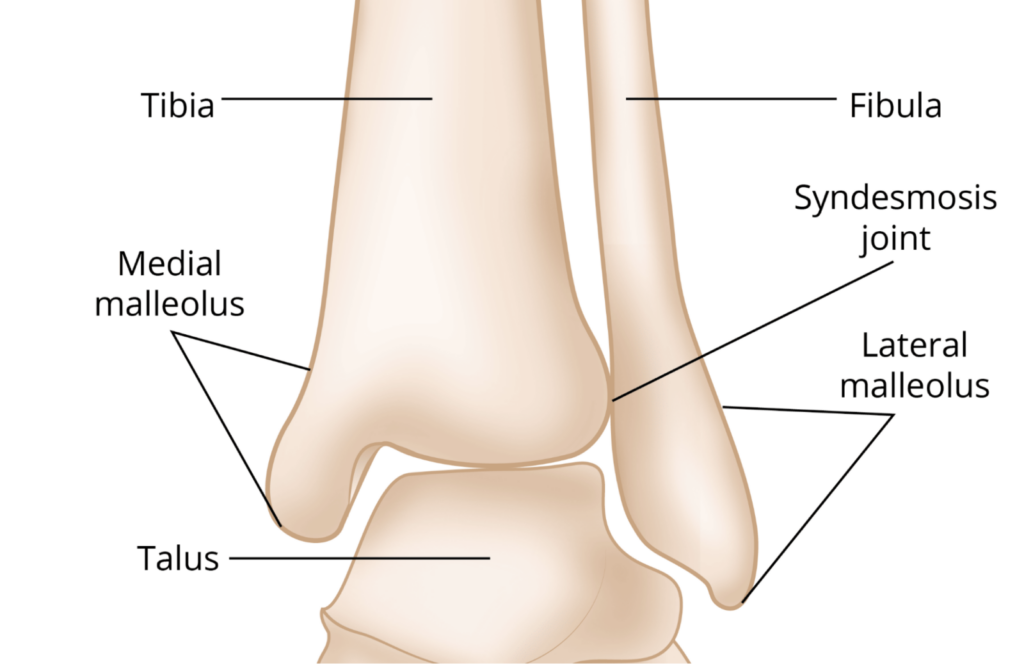Ankle Fracture Surgery in New Jersey
The Foot & Ankle Center
at Modern Orthopedics of New Jersey
Paramus
72 Route 17 North
Paramus, NJ 07652
Wayne
2025 Hamburg Turnpike
STE C, Wayne, NJ 07470
Parsippany
3799 US-46
#207, Parsippany, NJ 07054
Understanding Ankle Fractures
Types of Ankle Fractures
Ankle fractures are a common lower extremity injury involving an ankle bone break. They can, however, get complicated. In most instances, the skin is closed, but sometimes they are an open injury. If they are open injuries, they require emergency surgery to address them. Ankle fractures can also be displaced or non-displaced, which is medical terminology for whether the broken bone segments are separated from one another or not. Additionally, they can be comminuted, where the fracture is broken up into many smaller segments, often requiring surgical intervention. The condition is often associated with the tibia, fibula, and talus. In some instances, this may involve ligamentous structures as well, such as the ankle syndesmotic ligaments, anterior talofibular ligament, calcaneofibular ligament, posterior talofibular ligament, or deltoid ligaments.
Anatomy of the Ankle Joint

Common Causes and Risk Factors
Sometimes, ankle fractures can involve injuries to other parts of the body, such as a high leg fracture or the foot. They often occur due to sports injuries, falls, or accidents. Common risk factors include returning to sports after a long period of inactivity (weekend warrior syndrome), older age, and osteopenia.
Diagnosis of Ankle Fractures
Clinical Examination
An accurate assessment of the condition requires a detailed physical exam and X-ray imaging. Exams include direct palpation of areas of concern, ankle squeeze test, fibular slide test, and sometimes ankle anterior drawer and talar tilt tests. It is also important to rule out other foot and ankle injuries simultaneously. Some other injuries that may mimic an ankle fracture are ankle dislocations, subtalar dislocation, talar neck fractures, and calcaneal fractures. This is why a thorough physical examination is important in assessing the injury.
Imaging Techniques
In some instances, plain X-rays are insufficient, and one may require CT scans, MRIs, and sometimes even bone scans to assess certain fractures.
Surgical Options for Ankle Fractures
Open Reduction and Internal Fixation (ORIF)
Open reduction internal fixation is the classic technique of opening the area of injury and addressing the problem area directly. This involves assessing the damage, getting all structures in adequate alignment, and primarily fixing the area of concern using structural hardware to hold the broken bones in that proper alignment so that they may heal in that optimal position. In some instances, hardware may be removed at a future time. However, in a majority of instances, the hardware is left intact.
Minimally Invasive Surgery
Minimally invasive surgery is also an option and is similar to the ORIF procedure discussed before; however, when the injury can be closed (aligned without opening), percutaneous techniques can be used to implant the hardware. This requires minimal incisions and leads to less scarring. This leads to far fewer wound complications and requires fewer sutures to be removed (if any).
When Is Surgery Necessary?
Surgery is necessary when there is an open fracture, emergently so. It is also indicated when the bones are misaligned or separated, if there is a higher grade injury, or if the fracture pattern is unstable with concerns of it not healing in proper alignment. In some instances, fracture patterns and separation are so significant that they prevent bones from healing at all. The bones and ligaments of the ankle joint need to heal in proper alignment to limit the risk of developing arthritis in the future as much as possible. This is key because the ankle plays such a vital role in our mobility.
Preparing for Ankle Fracture Surgery
Pre-Operative Assessments
Pre-operative assessment requires a history and physical, usually performed by your surgeon, primary care doctor, or pediatrician. It also requires routine lab work, imaging, and sometimes other studies to ensure that surgery is safe for you.
What To Expect on the Day of Surgery
On the day of surgery, you would come in, and a detailed review of the procedure, its benefits, risks, likely outcomes, and the rehabilitation course would be discussed with you in thorough detail. The anesthesia doctor will also assess you, and they may implement a pre-operative block to ensure you are comfortable during and after the surgery as well. At that time, any additional looming questions will be welcomed.
Post-Surgical Care and Recovery
Immediate Post-Operative Care
Immediate post-operative care requires immobilization of the affected extremity. The initial weeks after surgery require elevating the extremity and keeping the bandage wrap and the splint/cast dry and intact. Upon discharge from the hospital, patients will be provided pain medication to ensure they are comfortable during their healing course. Routine follow-up evaluations will be required following surgery. Immediate post-operative care requires immobilization of the affected extremity. This can be performed using a knee scooter, crutches, or a wheelchair.
Rehabilitation and Physical Therapy
Over the healing course, the patient will closely be followed by their foot and ankle surgeon and will, in increments, be cleared for more and more activity/mobility. Once cleared, physical therapy will be an important part of the healing course.
Monitoring for Complications
Ankle fracture surgery is usually performed as same-day, outpatient surgery, and other times requires a short admission period for evaluation/education by physical therapy and monitoring. That monitoring includes pain management and keeping an eye out for any complications after the surgery. Physical therapy/ rehabilitation medicine evaluation is important postoperatively to properly educate the patient in using their assistive walking devices (knee scooter, crutches, or a wheelchair).
Long-Term Outcomes and Follow-Up
Healing and Bone Remodeling
For adults, depending on the injury and the extent of it, bone takes anywhere between 6-12 weeks to recover from an ankle fracture. In some instances, it can be even longer than that. Return to activities is usually between 3-6 months. Everyone heals at a different pace. In pediatric patients, the same respective injuries typically take 4-8 weeks for the bone to fully heal, with 2-5 months to return to full activity.
Returning to Normal Activities
Throughout the healing process, it is very important to receive adequate levels of vitamin D and consume protein to aid in the healing process. Malnourishment and inadequate levels of vitamin D and protein can impede surgical site healing, leading to potential wound formation, delayed bone healing, and even potential non-healing of the bone.
Potential Long-Term Complications
The aggressiveness of physical therapy and rehabilitation will play a significant role in the long-term patient outcome. Some long-term concerns are residual pain that may linger, the bone taking longer than expected to heal, the rehabilitation course taking place in slower increments, and the potential limitation of mobility. In some instances, patients experience non-healing of the bone, which may require intervention, and in some instances, a bone stimulator device is used to facilitate the bone healing process further. Discuss all concerns with your surgeon at Modern Orthopaedics of New Jersey.
Frequently Asked Questions
How Long Is the Recovery Period After Ankle Fracture Surgery?
From the date of surgery to return to activities and sports, it is somewhere between 3 and 6 months in most cases.
What Are the Risks Associated With Ankle Fracture Surgery?
Like most other surgeries, the risks include pain, swelling, infection, and hardware irritation being the most common, all of which would be addressed if they were to arise.
Can Ankle Fractures Recur After Surgery?
There is always a possibility of reinjuring the site of a previous injury. However, it is important to go through adequate physical therapy and nutritional regimen to decrease the risk as much as possible.




A Different Orthopedic Experience.
We combine cutting-edge technology with personalized care to deliver exceptional orthopedic treatment. Our team of experts focuses on your unique needs to ensure optimal outcomes and a superior healing experience.
Our Approach to Care
Comprehensive solutions for your orthopedic needs
Treatment Diversity
We offer a comprehensive range of treatments, ensuring personalized, targeted plans for every patient.
Technological Excellence
We utilize cutting-edge technology for precise diagnosis and innovative treatment options.
Collaborative Care
Our multi-disciplinary approach involves various specialties to provide comprehensive care and recovery.
Skilled Experts
Our team is composed of highly skilled, experienced orthopedic professionals, providing expert care.
Patient Focus
We prioritize patient comfort and satisfaction, creating a supportive environment for optimal healing.
Post-Treatment Support
Our robust post-treatment support ensures ongoing patient care through recovery and rehabilitation services.